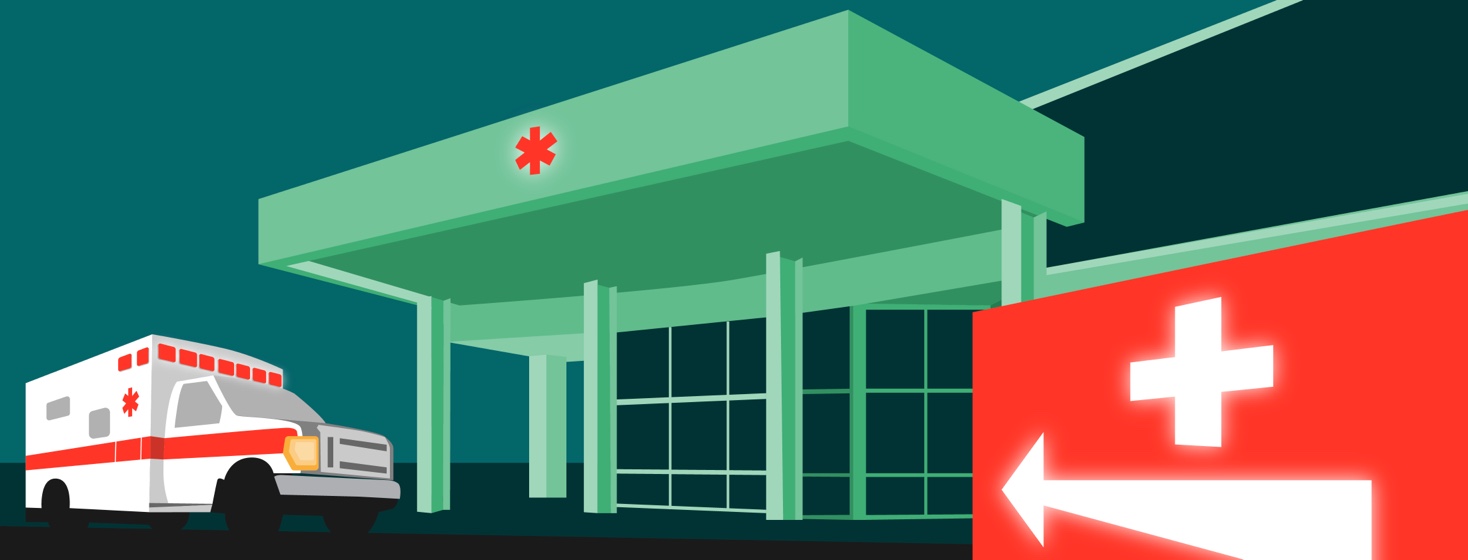When to Go to the Emergency Room for Myasthenia Gravis
Picture this: you’ve got a run-of-the-mill cold, or maybe the weather has been hot, you had a busy weekend, work is stressful ... Whatever the reason, your myasthenia gravis (MG) decides it has to get in on the act and you’re feeling weaker than usual.
Maybe you can’t lift your arms, or you can’t walk from one end of your house to the other without stopping to rest. Your feet are dragging. One or both of your eyelids are drooping.
You can’t chew your sandwich, or swallow that bite of burrito. Maybe you cough and choke on water, or it shoots up your nose instead of going down. Maybe you’re slurring your speech, or your voice is whispery, hoarse, and weirdly nasal. Maybe you can’t hold your head up.
You want to pretend it isn’t happening, but there’s no denying your MG is starting to flare.
What if symptoms worsen?
The first thing you do, reasonably, is make sure you’re up-to-date on your Mestinon (pyridostigmine) and other medications. Then you rest. And sometimes that’s enough.
Sometimes a good 24 to 48 hours of lying low and doing nothing more strenuous than choosing a movie to watch is enough to turn it around. You wake up feeling back to normal. Life goes on.
But what if it isn’t enough? What if you rest, but you wake up feeling even worse? A little weakness turns into something more serious. You’re short of breath, you can barely walk, eating anything solid is out of the question, you’re starting to choke on your own saliva ...
Head to the hospital
Not everyone gets every symptom, but everyone tends to have their cluster of warning signs. For me it’s shortness of breath, declining ability to walk or use my arms, increased choking, trouble keeping my head up, slurring when I speak.
At that point, I know to call my neurologist and let him know I’m in trouble. He usually has me increase my prednisone temporarily, and switch to liquid Mestinon on a more frequent schedule.
Featured Forum
View all responsesHe always tells me, "Have a very low threshold for deciding to go to the emergency room." Because if even those measures are not enough, my MG is dangerously out of control.
If that happens, I have some important red-light criteria: shortness of breath so bad that I can’t count past 15 in a single breath, mobility reduced to less than 10 feet (3 meters) at a stretch before I have to stop and sit down. Neck too weak to hold up my head. Eyes narrow slits. Voice a slurred and whispery mess. When it gets that bad, I know it’s time for me to head to the hospital.
The threat of a crisis
There’s good reason for that: With MG, when an exacerbation is getting worse and worse, the threat of myasthenic crisis may be on the horizon. Only 20 percent of people with MG will experience it, but it can happen terrifyingly fast.1
In the span of 15 minutes, I can go from being able to carry on a conversation to being unable to take a breath. When that happens, I need to be on my BiPAP immediately.
And I need to be where, if that’s not enough, I can be intubated and put on a ventilator to keep me breathing until intensive MG treatment starts to take effect and reverses the flare.
Know the warning signs
These are some general warning signs that everyone with MG should know:2
- Inability to count aloud to 20 at a rate of 2 numbers per second in a single breath.
- Shortness of breath - feeling winded or like you can’t take a full breath with mild exertion or at rest.
- Inability to speak in complete sentences without stopping for breath.
- Constantly coughing and choking on water or saliva.
- Inability to swallow saliva.
- Inability to hold up your head.
- Inability to speak.
If any of these symptoms happen to you, almost anyone familiar with myasthenia gravis will tell you to at minimum call your neurologist, but preferably go to the emergency room, and tell them you have MG.
There you can be assessed, treated, and kept safe. I’ll cover what happens next in Part 2: Myasthenia Gravis in the Emergency Room.

Join the conversation